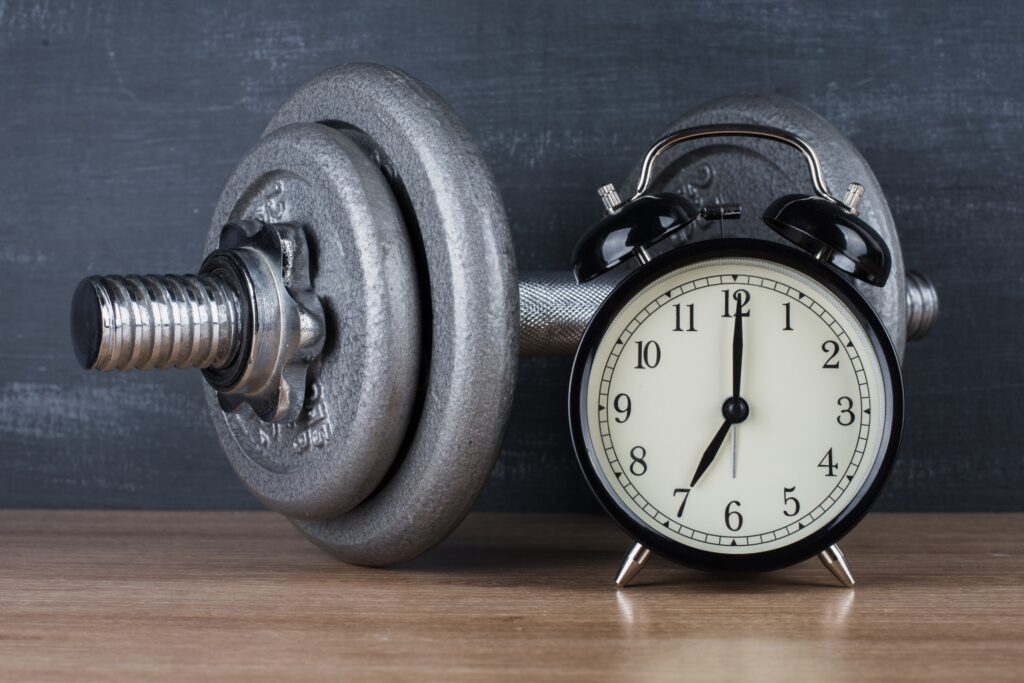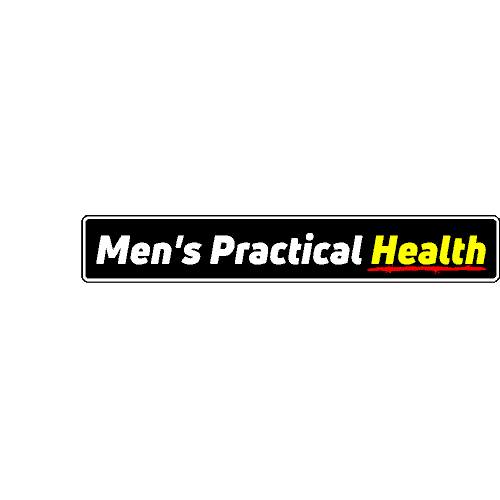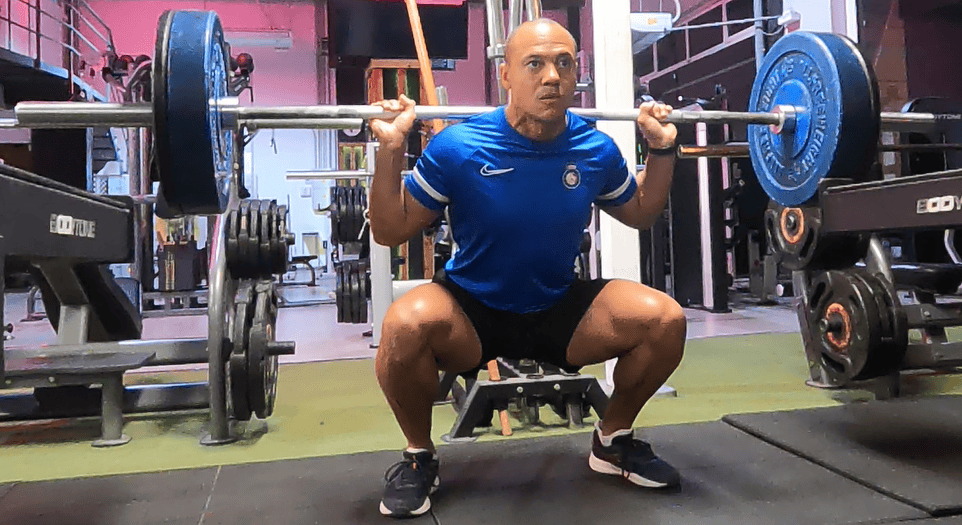Have you ever wondered what workout plan to use? Are you unsure if you should do full-body workouts or focus on specific muscle groups?
For many people, deciding which approach is best for their fitness goals can be confusing. Full-body workouts have many benefits, including their efficiency in achieving various fitness goals …
Such as muscle gain, strength development, and weight reduction.
These workouts also help those with limited days to train.
So, in this blog post, we’ll explore what full-body workouts entail, helping you unravel the mystery and …
Decide what fits best with your lifestyle and aspirations.
Let’s dive in!
What is a Full-Body Workout?
A full-body workout is a routine that targets all major muscle groups in one session. This includes your legs, back, chest, shoulders, arms, and core. The idea is to work out your entire body in a balanced way, ensuring no muscle group is left behind. The exercises to include in a full-body exercise routine are squats, deadlifts, and bench presses.
As they engage multiple muscle groups. Making them highly effective for workout routines.
Is it a Good Idea to Do a Full Body Workout?

Full-body resistance training workouts are a great way to build muscle, lose fat, and improve your physique. Another benefit is the balance of working all the muscle groups without overtraining one group.
Life happens for the average Joe, and there might be times when you miss a training day.
We’ve all been there!
But if you do a split routine, one muscle group will be neglected for another week, causing an imbalance.
In contrast, this can’t happen when adopting a full-body routine.
They are particularly beneficial for beginners …
As they introduce you to various exercises, helping you learn the basics of resistance training. It also allows beginners to build a strong foundation before moving on to split routines.
Additionally, whole body workouts help build muscle mass and enhance metabolism.
Time-Efficiency

If you have a busy schedule, full-body workouts are a godsend. Unlike split routines that require you to hit the gym multiple times a week, The whole body can be done in as little as two days per week.
This means you spend less time in the gym while still making significant progress.
Balanced Approach
These workouts also promote a balanced approach to fitness. By ensuring no one muscle group is neglected, full-body workouts promote balanced physical development. By targeting all the major muscles, you decrease the risk of muscle imbalances, which can lead to injuries over time.
How Many Hours Should a Full Body Workout Be?

The time spent training will depend on your fitness level and goals. However, there are some general guidelines to consider.
Optimal Duration
While the duration will be dictated by individual needs (which we will look at later), generally…
A full-body workout will last around one hour to one and a half hours.
This includes a warm-up and the main workout. This timeframe is usually enough to target all major muscle groups without causing excessive fatigue.
Quality or Quantity
Whatever workout routine you do, you should always focus on the quality of exercise.
Also, performing each exercise with good technique is important to reduce the risk of injuries and get the most from your hard work.
Quantity will depend on how many times you train throughout the week. The more times you train, the fewer sets you will need to do during each individual session.
Adjust According to Goals
Not everybody has the same goals, so you might plan your workouts differently. Although most core weight-lifting exercises will be the same, how you train will vary.
For example, are you training for:
- Strength
- Hypertrophy
- Endurance
Each one of these can have an impact on your workout.
Common Mistakes to Avoid

While full-body workouts are highly effective, there are some common pitfalls you should be wary of to get the best results.
- Neglecting a Warm-Up
- Inconsistent Form
- Overtraining
- Poor Exercise Selection
- Ignoring Muscle Groups
- Improper weight selection
Neglecting a warm-up
If you are lucky enough to be in your twenties, skipping a warm-up might not be as catastrophic as for those of who are over 30—although I would not recommend it!
But if you are older, like myself …
Then, performing some warm-up sets is advisable.
Now, you don’t need to spend 15 minutes before each session going on the treadmill, rowing machine or …
Doing some complex warm-up routine that you saw in Men’s Health.
Simply loosening up the joints and performing a couple of light warm-up sets before each exercise is enough.
Also, remember that the further into your full-body workout, the fewer warm-up sets you will need.
Inconsistent form
Let’s face it …
We, as men have egos!
And those egos tend to lead to wanting to lift heavy weights. After all, you don’t want to look like the weakest in the gym.
But this will hurt your progress!
The most important thing is perfecting the movement. Especially when performing the compound lifts.
This takes time; the more sets you do, the better you will get.
Now, I’m not saying you should not increase the weight. After all, that is what we should aim to do.
However, sacrificing good technique for heavier weights can increase the risk of injury.
So before you increase the load, make sure your technique is improving.
Overtraining

A Full-body workout is very taxing on your body. So, failing to allow adequate recovery time can hinder progress and lead to burnout.
As a result, giving your body time to recover in between sessions is essential. Again, everyone is different, and it will depend on the quantity and intensity of each work. This will determine how much recovery time you need.
But no matter how old you are, you should have at least one day rest between your whole body training days.
I find that doing a full-body workout every third day is a great way to recover and work hard during each workout.
Poor exercise selection
With all the whacky videos of people telling you that you need to do certain unconventional exercises, it’s no wonder people don’t see any progress.
While these exercises can be fun to watch, most are useless.
Stick to the tried and tested. Such as:
- Squats
- Bench press
- Rows
- Deadlifts
- Chest fly
- Pull-ups / Lat pulldowns
They might seem boring, but there is a reason why they have remained relevant for so long.
Ignoring muscle groups
Focusing on specific muscles while neglecting others can lead to imbalances and injuries.
Performing lower body exercises is essential to ensure a balanced workout.
I’m sure you’re aware of the term – skipping leg day.
This is something you want to avoid!
So selecting the right exercises is crucial. Ensure you cover all your bases and work all the muscle groups.
Improper Weight Selection

Another frequent error is not adjusting the weight or resistance to suit individual fitness levels. As mentioned, lifting too heavy weights can lead to poor form and injuries, while using weights that are too light won’t provide enough stimulus for muscle growth.
This is why you should log the weight you lift and the number of reps you can perform on each exercise. Then, you can see how you progress each week/month.
If you’re a beginner, you probably won’t get this right the first time. But don’t worry!
Ensure you are trying to work within a range of reps rather than a specific number. As I mentioned before, the range will depend on your goals with strength, hypertrophy, and endurance.
Tailoring Your Workout Routine
A one-size-fits-all approach rarely works in fitness. While the principles are the same, tailoring your full-body workout routine to fit in with your situation and goals is crucial for success.
For instance:
- How many days a week can you train
- The amount of time you have to train during each session
- How many days to recover do you need
The Pros and Cons of a Full Body Workout

Like any workout routine, full-body workout programs come with their own set of advantages and disadvantages.
So here is a list of the pros and cons of a full-body workout plan.
Pros
Limited days spent in the gym
Because you’re working all your body parts, you do not need to spend five or six days in the gym. You can achieve success by going two to three times a week, which gives you time to do other things.
You won’t miss a muscle group
For those who do a split routine (such as a bro split), the problem arises when they might miss a day due to life happening. This means a muscle group might get missed and not be worked on for another week.
With a full-body workout, this does not happen.
If you miss a day, one specific muscle group is not put at a disadvantage. It won’t be long before each muscle is trained again. Unlike a split workout, full-body workouts ensure that no muscle group is given priority, even if a workout day is skipped.
Cons
Intensity:
Full-body workouts can be intense, especially for beginners. The demand on multiple muscle groups can lead to quicker fatigue, which may affect performance at the back end of the workout.
Limited Focus:
If you have specific goals, such as targeting a particular muscle group, a full-body workout may not provide the focused attention you need. In such cases, a split routine might be more beneficial.
Time-consuming
Full-body workouts are generally long. This is because it takes time to work all the muscles in one session and get enough sets for each muscle group.
So this might be a problem if you only have thirty to forty minutes to work out.
Other topics related to full-body workout routines are covered below …
Include:
- Is 5 exercises enough for full-body workout?
- Is full body 3 times a week enough?
- Is it OK to work full body every day?
- Are full-body workouts good for fat loss?
- Does a full-body workout reduce belly fat?
Is 5 exercises enough for full-body workout?
Five exercises can be sufficient for a full-body workout, especially if they are strategically chosen to target major muscle groups.
By selecting compound movements such as squats, deadlifts, bench presses, rows, and pull-ups, you can engage multiple muscle groups simultaneously, maximising efficiency and effectiveness.
Moreover, performing five well-structured exercises is a sufficient challenge to help muscles grow and promote metabolic adaptation, leading to valuable fitness gains.
As long as the exercises are executed with proper form and you progressively challenge yourself, five exercises can yield significant results in overall strength and fitness improvement.
Is full body 3 times a week enough?

Training three times a week provides ample opportunity to increase the volume and intensity of exercises, leading to progressive overload, a fundamental principle of resistance training.
In fact, I recommend training two to three times a week for beginners. Even if you’re more advanced, using this for a large portion of your training is still a great idea.
Exercising this way will allow you to get enough volume and intensity into your workouts …
While also being able to get good rest in between.
Is it OK to work full body every day?
Theoretically, training the whole body every day is possible if you plan your workouts correctly.
The main principle you need to follow when training every day is to consider the intensity and volume.
Training hard every day would not allow time for your body to recover, making building muscle difficult.
So, you would train hard for two to three days and then a couple of days of lifting light weights or using resistance bands.
The lighter training days would be used as an active recovery session.
Simply activating blood flow to the muscles and sending a muscle-building signal to the central nervous system.
These light training days should not make you fatigued.
Are full-body workouts good for fat loss?

Studies have found that full-body workouts are an effective way losing fat, as well as building muscle …
Which will impact the number of calories you burn, both when working out and at rest.
Calories burned during a full-body workout will be greater than during a split routine because you will perform more compound exercises.
These types of exercises require more effort and involve more muscle groups to work together.
Also, increasing muscle mass means your body will burn more calories to maintain that muscle.
Which means you will burn more calories at rest.
Does a full-body workout reduce belly fat?
Full body routines are effective in helping to reduce belly fat alongside a suitable diet.
But remember …
Targeting belly fat is not possible, and everyone loses fat from different parts of their body differently.
However, working out and eating consistently with a caloric deficit will result in belly fat loss.
Summary of The Full-Body Workout
Complete body exercise routines offer a balanced and efficient way to achieve various fitness goals. Targeting all major muscle groups ensures comprehensive muscle development and reduces the risk of imbalances.
However, it is essential to tailor your routine to meet your specific needs and goals and allow for adequate rest and recovery.
Whether you’re a beginner or a seasoned athlete, full-body workouts can help you reach your goals.


